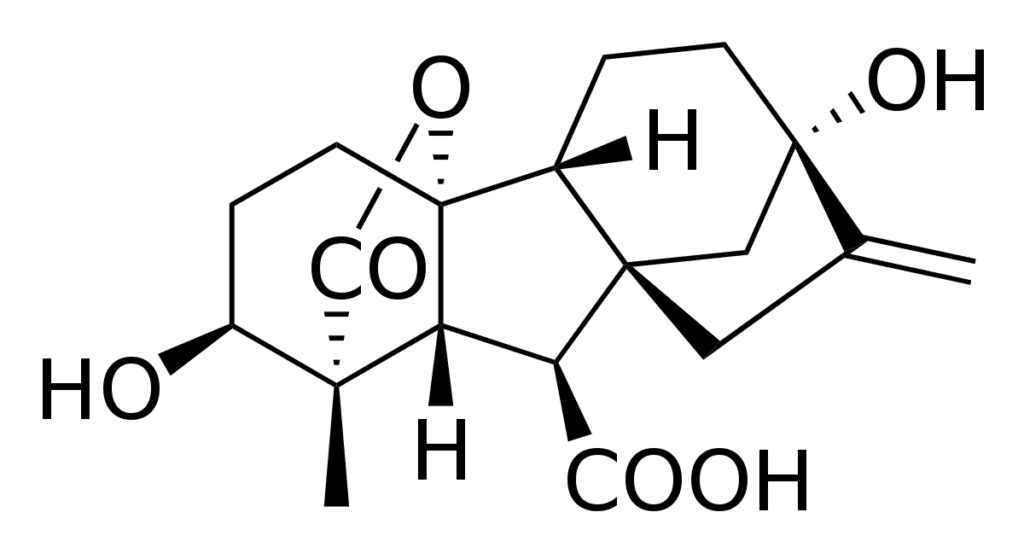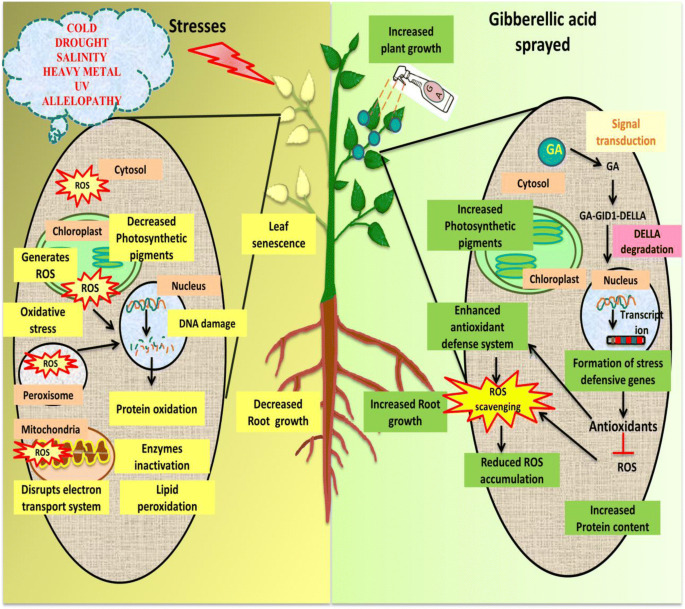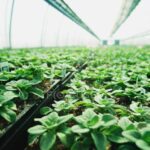
Gibberellins are a group of diterpenoids that are defined more by their structure than by their biological activity, contrary to what happens with Auxins and Cytokinins. Active gibberellins act as essential regulators of plant development and cover all aspects of plant life such as: seed germination, stem growth, parthenocarpy, leaf expansion, root elongation, flowering and release of hydrolic enzymes. Only biologically active gibberellins are the ones that fulfill these functions, the non-bioactive ones prevail in plant tissue as predecessors of the bioactive forms or as deactivated metabolites.

Generally, higher levels of gibberellins are found in reproductive parts compared to vegetative parts and in young parts compared to mature parts. These are synthesized in the apical primordia of leaves, in root tips, in fruits, young tissues and developing seeds. They are synthesized via the terpenoid pathway. Some of the effects that this hormone induces is the induction of stem growth, regulation of the transition between the juvenile and adult phase, induction of flowering and sexual determination of the flower, as well as induction of germination in addition to promoting intermodal elongation.
In short, in the agricultural sector gibberellins are used, for example in:
- In parsley to increase growth
- In citrus it delays senescence
- In apple tree to increase fruit size
- In cane to increase sucrose yield
Gibberellins are synthesized (1) by the coleoptile and scutellum of the embryo and released in the endosperm (2); gibberellins diffuse into the aleurone layer; (3) Aleurone layer cells are induced to synthesize and secrete enzymes (α-amylases and other hydrolases) in the starchy endosperm. (4) starch and other polymers are broken down to small molecules; (5) released solutes (monomers) are transported into the embryo where they are absorbed and used for embryo development.

Given the above, we can say that gibberellins play an important role as plant growth regulators, which is why Grupo Fagro designed high-quality products that include this hormone. The products that contain Gibberellin in their composition are: Farmagib® Nzn and the previously mentioned Impulssor which uses a balanced combination of 3 phytohormones (Auxins, Cytokinins and Gibberellins).
Farmagib® Nzn stimulates the development of plants due to its high content of gibberlic acid enriched with three elements that act synergistically with this hormone: Nitrogen, potassium and zinc.
It favors the growth of fruits, accelerates the sprouting of vegetative buds and favors the growth of internodes. The hormone plus nutrient mixture allows the growth stimulation effect to be balanced.
Additionally, with Farmagib® NZn, it is possible to quickly activate the growth of plants when they have gone through a small period of environmental stress in the first periods of development. It favors the growth of fruits, accelerates the sprouting of vegetative buds and favors the growth of internodes. The hormone plus nutrient mixture allows the growth stimulation effect to be balanced.
 AgronoBlog – Agriculture Blog
AgronoBlog – Agriculture Blog 
